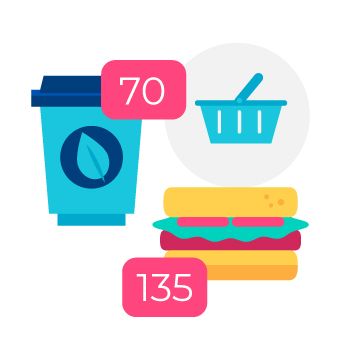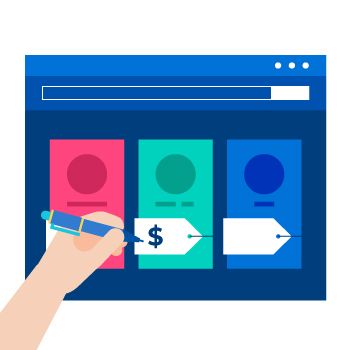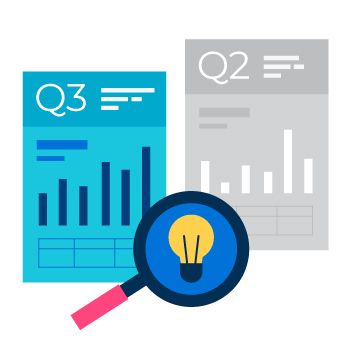Sales Forecasting: Definition and Methodologies

Contents
Ancient Chinese poet Lao Tzu once said: “Those who have knowledge, don’t predict. Those who predict, don’t have knowledge.”
But we’ve come a long way since the 6th century BCE. Forecasting matters, and if you’re not doing it, you’re not running your business properly.
Say you’re opening a restaurant. Would you just deal with peaks and troughs as they happen? Or would you attempt to predict what times of the day you’re likely to be busiest, and what dishes will be most popular on which days?
Probably the second one, right?
It’ll help you plan staffing levels and give your chefs a head start on prep.
That same logic should be applied to any business – which is where sales forecasting comes in.
Sales Forecast Definition: What Is Sales Forecasting?
A sales forecast is an attempt to predict future revenue from sales, typically broken down month by month for at least the next 12 months, and then by year for the next two to five years. For most business plans, a forecast looking three years into the future is generally sufficient.
The average forecast is based on data from several sources: your own historic sales, the size and quality of your current pipeline, and wider industry and societal trends. That way, you’re less likely to be way off the mark with your figures.
For instance, your pipeline might tell you that pumpkin sales are spiking throughout October, but your historic data and industry trends should tell you that they’ll likely tail off significantly in November.
Much like a weather forecast, your sales forecast should be treated as a plan to work from, rather than a concrete guarantee of what’s going to happen six months down the line.
It’s also important to note what sales forecasting isn’t. Specifically, a sales forecast isn’t the same as sales goal-setting:
- A sales goal outlines what you want to happen
- A sales forecast estimates what will happen, regardless of your sales targets
How to Forecast Sales
You understand the value of a sales forecast – now here’s how to build your own:
1. Remember: You Don’t Need to Be an Accountant
Sales forecasting might sound complex, but in reality it’s little more than a series of educated guesses.
Don’t expect to get it perfect. The most experienced financial modelers, with access to the most advanced algorithms, would never expect to get a forecast completely right – so neither should you.
The elements of a sales forecast are pretty simple. If you have more than one product or service, display predicted revenue from each on a separate row in a spreadsheet and add them together. If you’ve got 10 or more lines, consolidate them.
You’re planning future strategy, not bookkeeping, so don’t worry about going super in-depth.
2. Forecast “Units” Sold Per Month

For starters, try to predict the number of “units” you expect to sell each month.
Granted, the word “units” often suggests a physical product. But it could just as easily apply to the different Mailshake product tiers, or the number of cups of coffee or vegetarian breakfasts sold by our fictional restaurant.
It becomes far easier to forecast once you break your service down into its component parts, rather than just looking at the bottom line.
3. Leverage Historical Data
Previous sales data is your best friend where forecasting is involved – in particular, the recent past.
Review your performance over the past three to five years to identify and confirm seasonal trends. But treat the last year’s worth of data as the most valuable in terms of producing your sales forecast.
4. Use Market Data for New Products
But what if you don’t have any historical data?
What if you’re launching a new product that’s different from anything you’ve ever sold before?
That’s still no excuse for not producing a sales forecast.
You clearly don’t know exactly what’s going to happen going forward, but there will always be some sort of data you can lean on to predict demand. Before fax machines – a ground-breaking product at the time – first hit the market, analysts used sales figures from typewriters and photocopiers to build their sales forecasts.
5. Project Prices

The final step is to apply pricing data to all those units you expect to sell.
Once you’ve done that, you should be left with a simple spreadsheet that adds up all the different unit sales in one section, and multiplies those values by your estimated prices in another section, to produce your revenue forecast in the third section.
Sales Forecasting Methodologies
So that’s some basic theory behind building a sales forecast. But in practice, where do you pluck all those numbers from?
I’ll reiterate: your goal here isn’t to make your forecast 100% accurate. But the data has to come from somewhere, otherwise it’s essentially meaningless. Here are a couple different methods you can use to pull yours together:
1. Trusting Your Sales Team’s Judgment
The theory behind this one is pretty simple. Your sales team has the best visibility over what’s coming up, so you can just ask your reps how much a deal will be worth when it closes.
Add all those totals together, extrapolate them for another year or two, then presto! You’ve got yourself a sales forecast.
Clearly, there are some flaws in this methodology – the most significant of which is the mentality of the average salesperson.
In the same way that someone who’s been fishing will always exaggerate the size of that monster perch they landed, sales reps have a tendency to overestimate sales forecasts.
What’s more, different salespeople will arrive at different estimates, so there’s really no way to build a consistent, repeatable model here.
2. Reviewing Past Data

Another pretty simple approach, this one relies on examining how you’ve performed under similar conditions in the past to forecast how you’ll perform in the present and future.
Let’s say your business has grown at 10% a year over the last five years, and this time last year you closed $20,000 of new business. Using this model, it’d be reasonable to estimate $22,000 in sales revenue this month.
While a little more accurate than the previous method, relying solely on past data means you’re ignoring anything else that’s happening in the big wide world.
Coronavirus is a stark example of how this approach can fall apart. If you sell business clothing, it doesn’t matter how many units you shifted in Q3 2019 – with so many people working remotely at the moment, you’re just not going to sell as much.
3. Using Deal Stages
This one’s a little more sophisticated.
For each stage of your sales process, you assign a probability that a deal will close. Maybe it’s 5% if they reply to your initial cold email, rising to 50% if they agree to a product demo, and 75% if you book a pitch meeting with their key decision-makers.
Then, at any point, you can multiply the size of the opportunity by the percentage chance of that deal closing to estimate the revenue you can expect.
This is a really popular method, but it still has its drawbacks.
In particular, it ignores the passage of time. If you’ve run product demos for two different leads, but one of them was three weeks ago and the other was this morning, do they really have the same likelihood of closing? Probably not.
4. Building a Custom Model
By definition, a custom model can be anything. But generally, it’ll combine all the above methods, plus additional characteristics like the age of the opportunity and the buying signals your prospect has displayed.
This approach will typically produce the most accurate results, but you’ll likely need an analytics tool and/or advanced CRM reports to leverage it.
Sales Forecasting Examples
How could your sales forecast look once you’ve finished crunching the numbers? Here are a couple examples:
Basic Sales Forecast
Tim Berry, Chairman and Founder of Bplans.com, gives a fantastic example of a simple sales forecast for a new cafe.

This forecast is based on the following assumptions:
- With six tables of four people each, the owner can serve approximately 24 sit-down lunches on an average day
- To-go lunches will be about double the table lunches, so 48 per day
- Lunch beverages will average .9 for every lunch at the tables, and only .5 for every to-go lunch
- Coffee capacity maxes out at 30 customers per hour during the morning hours, with some further cups sold at lunch at a rate of three coffees for every 10 lunches
To come up with these assumptions, the cafe’s fictional owner has leveraged her experience in the industry and her location on a business park, meaning her peaks in demand will be heavily influenced by the makeup of the business day.
Detailed Sales Forecast
Microsoft gives us this detailed sales forecast template, which can be adapted to the needs of any business:

The spreadsheet comes with a bunch of pre-built formulas and worksheet features that do a lot of the hard work for you, while relying on a weighted forecasting method based around the probability that a given opportunity will result in a deal.
What’s your current preferred method of sales forecasting? Let me know in the comments below:





